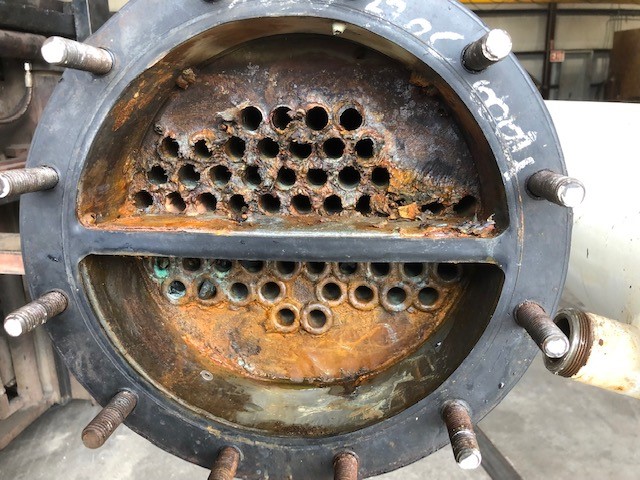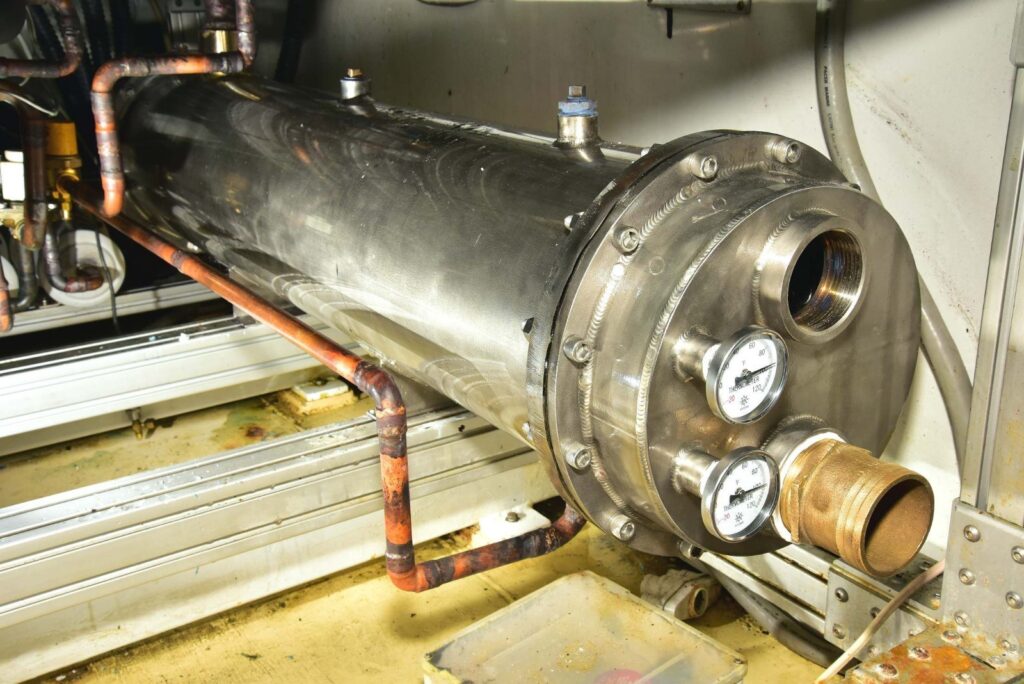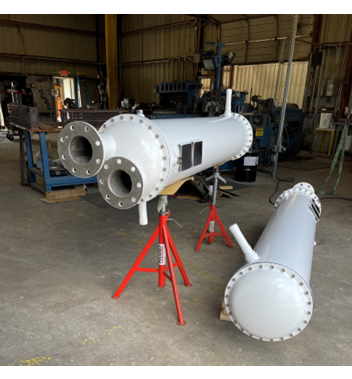Historically, wooden ships didn’t rust, they rotted; steel ships don’t rot, they rust. There is still no free lunch when it comes to vessels sailing in salt water and the unavoidable effects of seawater corrosion.
Saltwater corrosion is not limited to just the hull of a ship; machinery, pumps, piping and rigging are all susceptible to damage caused by this fluid (which covers 68% of the Earth’s surface). Estimates are that marine corrosion costs the global shipping industry between $50 and $80 billion dollars annually (AAMP (formerly NACE)). If regular maintenance is not performed, any ship will see reduced efficiency and higher costs, and will eventually have to be taken out of service.

What are the best methods for dealing with saltwater corrosion? Materials, coatings and manpower are the first lines of defense and of these three, better materials offer the most cost-effective solution. Put another way; when it comes to protecting metal assets on a ship; you can prevent it, protect it or repair it.
Titanium completely prevents sea water induced material loss and is becoming an increasingly popular choice for many marine equipment applications. It is completely resistant to attack by saltwater and long-term exposure will not result in corrosion or erosion damage, thus almost completely eliminating replacement and maintenance expenses. Any associated / connected machinery is protected from saltwater intrusion (flooding), which eliminates the potential for catastrophic damage to key vessel systems (engines, compressors, gear boxes and HVAC packages).
So why isn’t Titanium more widely used on ships and boats? The most accurate answer is misinformation about the actual costs of using this material. The widely held ‘impressions’ of Titanium are that it is:
The first three objections have a historical basis in fact but are no longer entirely correct. If this were the case, then the global aerospace community would not be absorbing over 70% of annual production. Advances in CNC machining and additive manufacturing, along with an expanding global supply chain have brought the cost of finished Titanium products down significantly.

When looking at the long-term ROI, Titanium also delivers benefits. Marine heat exchangers are a great example of how a longer service life can provide a better ROI when compared to Copper-Nickel units.
Consider this: The case of a Copper-Nickel shell and tube heat exchanger installed in air conditioning service on a 250 foot yacht. It will last approximately 4-7 years before it needs to be replaced. This equates to 5 units over a 20 year vessel life (before major refitting). A Titanium heat exchanger may cost 50% more than other metals but will never need replacement. The math is clear.
The ROI lines begin to cross at just over five years in service when the first Copper-Nickel unit will have to be replaced. And this replacement cost includes repeat shipyard work, time off of charter or the potential for catastrophic damage due to sea water leaking into the A/C machinery. The incremental, added expense of Titanium is very quickly eclipsed by the recurring costs to keep the Copper-Nickel units in service.
What is the main type of corrosion in marine environments? Galvanic corrosion is the primary mode and occurs when three individual conditions are present (T.S Lee, Chemical Engineering magazine, April 1985).
Removing any one of the above three conditions will eliminate galvanic corrosion. Note, because Titanium is a highly noble metal, it will be the other metal that will be damaged if galvanic corrosion is allowed to take place. Corrosion will result in metal loss, structural weakening and ultimate component failure.
What is the history of Titanium in marine service? Hardly a new entry, Titanium was discovered in 1791 in Great Britain. Commercially viable production methods were developed in the 1930’s and it began to see applications in the military arena before, during and after WWII.
One of the first significant uses was in the construction of submarines during the Cold War. The Soviet Union had the necessary raw ore, inexpensive electricity and cheap labor; all requisites for Titanium to be considered an attractive material option for marine construction. High strength, zero corrosion and light weight made it an ideal (albeit expensive) material for the pressure hull construction.
In the post-World War II era, aerospace applications for Titanium quickly overtook marine use as plane makers again sought its high strength and lightweight. The global aerospace industry was expanding rapidly as post war civilian air travel exploded.
Nuclear power applications were also a market driver because Titanium and Zirconium are used in reactor construction (both utilize the Kroll production process). Titanium / Zirconium processing plants are often co-located near nuclear power facilities.
The net result of these events was that Titanium did not see widespread use in the marine sector due to competition from more expensive applications such as aerospace. Steel was also relatively cheap and the ship building knowledge base favored steel construction.
Up until very recently, Titanium has remained out of reach for general marine use. While it is virtually impervious to sea water attack, Titanium is still perceived as too expensive. But, with improved manufacturing technology, higher quality expectations and a better understanding of the ‘all in costs’ of corrosion, Titanium is getting a well-deserved second look.
For example, Titanium has proven to be an ideal solution for the construction of marine heat exchangers. The advantages include zero corrosion and erosion, lighter weight and an unlimited service in salt water. The downsides remain its elevated material costs, higher skills required for fabrication and a limited offering of associated market ready products (pumps, piping, valves, etc.).
So, how do Titanium products compare to Copper-Nickel equipment? Commercial Titanium costs more than $25 per pound, but one can’t get hung up on this initial number. Comparing price per pound will not accurately tell the whole story.
Copper is readily available and lower in cost, but it is highly susceptible to galvanic corrosion and material thinning due to velocity induced erosion in the tubes. Titanium, on the other hand, is more expensive but is virtually unaffected by sea water.
As with any material decision, there are always many factors to consider. If the driving parameters are reliability, duty cycle and ROI, then Titanium has strong reasons to be considered because of its complete resistance to marine corrosion.
